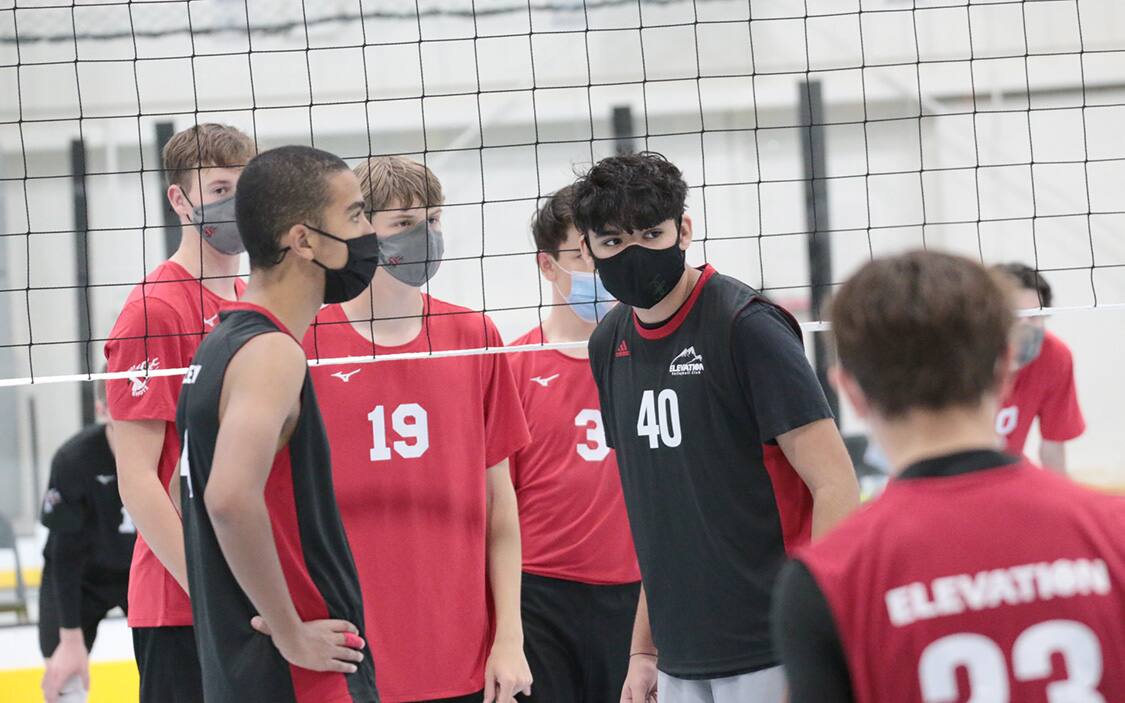
Power League tournaments kicked off in the Rocky Mountain Region Oct. 17-18, showcasing both the joys of returning to play and the new protocols due to the COVID-19 pandemic.
New RMR Executive Director Keith Murlless, who joined the region Sept. 1, has been instrumental in creating strict facility and tournament guidelines to mitigate risk of infection. According to Murlless, the decision to hold the fall league was driven by the Colorado High School Activities Association (CHSAA), which moved state high school volleyball to the spring.
“We’re eyes wide open to the fact that the spring is going to have every modality of volleyball playing at once, so resources are going to be stretched very thin in terms of manpower, administrative power and particularly gymnasium availability,” he said.
With no access to most public school gyms due to closures, the region is using private facilities for its Power Series, and it also split its playing population in half. “Older” athletes are playing in the fall so they’ll be free to play their school season; younger athletes will play in the spring.
Facility capacity is another part of the RMR plan, as it depends on the occupancy limits of the facility and particularly the COVID restrictions in place for a particular county. For instance, while many outlying counties capped attendance at 175 (as long as the occupancy limit is greater) at some facilities, in other areas, like downtown Denver, the capacity has been lower due to higher restrictions.
Flexibility is important, as these numbers have already changed since the beginning of the season. Level 2 restrictions now in place in outliers moved the capacity limit to <100. Denver has moved to Level 3, so operations have been suspended in the city itself.
Team Colorado in Action
RMR protocols were in action Oct. 17 in Colorado Springs as Team Colorado held its first-ever power tournament in its new facility, The Farm. Tournament director Chrissy Elder enforced mask-wearing, hand-washing and ball sanitizing, and attendance was limited. Unfortunately, that meant parents were unable to be on the sidelines.
“I know the parents want to see their kids play,” said Elder, who added that the region’s agreement with streaming service BallerTV has been helpful. “We just have to wait it out and see when guidelines change.”
Elder added that the athletes are prepared and doing their best to follow protocols during practice and in competition.
“I think the athletes have done a tremendous job. They just want to play,” she said. “From the start we’ve been asking them to wear masks because it’s the guidelines. El Paso County has told us every week that they have to be in them. I think we’ve done a fantastic job. They have to play in them (masks) in practice, so by match time, they’ll be used to it.”
Not only is Elder following local guidelines, she’s also following the new RMR guidelines for play, which in some ways are stricter than those imposed by the state and county.
Pace of Play
For instance, RMR has built in no exceptions to mask-wearing on the court; that includes medical waivers. While Murlless understands this is disappointing to some players and parents, the region decided they wanted to minimize exposure in every way possible while still playing.
Because of the policy, and the fact that changes such as the elimination of crossover play relieved some scheduling pressure, they have worked to change what Murlless calls the “culture for the pace of play.”
“We’re trying to teach our indoor people how to be a bit more like beach people,” he said. “If you’ve just been involved in a difficult rally, and you’re struggling to get some oxygen back, and the mask isn’t helping, we’re encouraging you to look up to the referee and politely raise your hand.”
This, Murlless continued, allows a player to step away and take a few breaths before stepping back on the court.
“We’re saying ‘we’ve got time, let’s slow down,’ Murlless said. “They have to play in masks for very good reasons, but we can slow the pace of play to give them the chance between rallies to regain oxygen levels.”
Murlless also understands that his site directors are overtaxed because their responsibilities have increased. With that in mind, for the second weekend of play he hired a few extra people at the region’s expense to assure there was a referee at every venue to act as an assistant site director of sorts.
“That person was able to assist with mask compliance and temperature checking, BallerTV mechanics and that sort of thing,” he said.
The region also has empowered the referees to sanction teams with a delay for a uniform noncompliance.
“The mask in the RMR has become an element of the mandatory uniform, and if you’re not wearing your appropriate uniform in its appropriate fashion over your nose and mouth, then you are subject to a yellow card or even a red if necessary.”
However, he said he doesn’t believe that had to be enforced at all during the second weekend, as players and coaches grew increasingly familiar and comfortable with the policies. He’s also thankful for the officials who have been part of the team to keep everyone safe by working with these new standards.
“I have a deep appreciation for our referees and the work they do, and I appreciate that they are willing to put in the extra effort for us during this time.”
